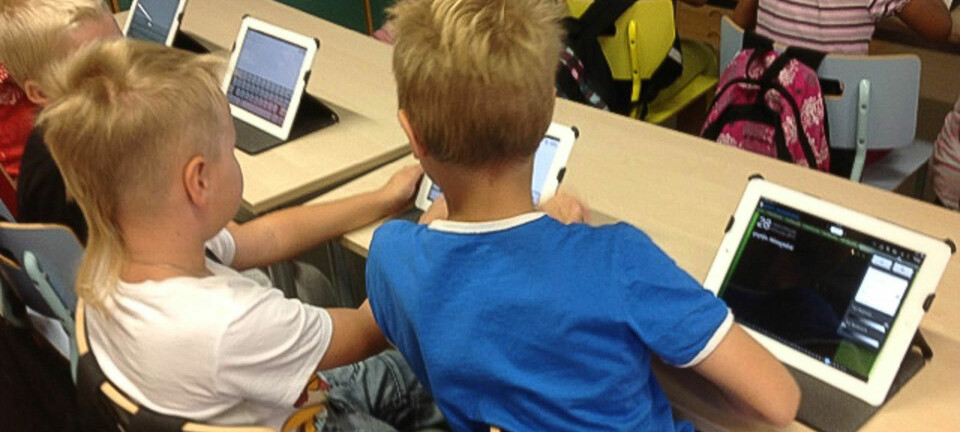This article was produced and financed by University of Stavanger

Popular package for learning
Nursing students prefer e-compendia over both traditional learning aids and other electronic-supported solutions.
Denne artikkelen er over ti år gammel og kan inneholde utdatert informasjon.
E-learning has expanded in higher education during recent years, with a number of new digital tools developed to give students access to the curriculum at any time and anywhere.
The electronic compendia represented a completely new educational concept when they were developed by NettOp as a combination of PDF and Flash technology.
A survey of UiS nursing students now shows a big preference for e-compendia over both traditional learning aids and other electronic-supported solutions – with textbooks the least popular.
The study has been carried out by associate professor Brynjar Foss in the department of health studies, who was the first member of the UiS teaching staff involved in developing the e-compendia.

After several years of using them as one of several educational tools, he wanted to find out more about their impact. And the survey has clearly confirmed their popularity.
Ranked by satisfaction
Foss asked 349 nursing students who had their first term at the UiS in 2009, 2010 and 2012 to rank various teaching aids by how much they were satisfied with them.
The e-compendia scored far higher than many of the other options. No less than 85 percent of respondents found them very good, with a further 14 percent rating them as good.
Lectures were the next most popular educational tool, followed by multi-choice tests, group assignments and podcasts on the university’s iTunes U solution.
“The large proportion of students giving e-compendia the highest score is stable across several years,” says Foss. “But the 2010 and 2012 entrants are the most enthusiastic.
“They were among the first students in Norway who had the opportunity to make daily use of computers at further education college, so that may play a role here.”
Surprising result for podcasts
At the same time, Foss is rather surprised that podcasting failed to come out right at the top alongside e-compendia in his study.
“About 30 percent of the students made no use of this tool. Nor was this option available to the 2009 entrants, so the sample was somewhat smaller”.
“One explanation could be that the podcasts, which can be downloaded to computers or mobile phones, comprise the same audio files already found in the e-compendia.”
He is less surprised over the tools which received the lowest scores – namely assignment seminars, discussion fora and textbooks.
“It’s difficult to determine whether the e-compendia improve learning, but they certainly rank as the tool which the students themselves are most satisfied with.”
He nevertheless recommends that students should not rely exclusively on these electronic aids, but supplement them with other learning tools.
Clear advantages
Second-year UiS nursing students Malin Theissen and Emilie Vinnes are enthusiastic about the e-compendia, and say that their advantages are clear.
“They concentrate more precisely on what we’re supposed to learn,” explains Vinnes.
“We work more purposefully, and can see and hear our lessons sitting on the bus or anywhere. We don’t have to drag heavy books around, but have access via a computer, an iPad or a mobile phone.”
She and Theissen are not surprised that the e-compendia came out top in the survey.
“They give you a different feel for what you’re learning,” says Theissen. “They’re very visual and easy to use. We employ them every day.”


































